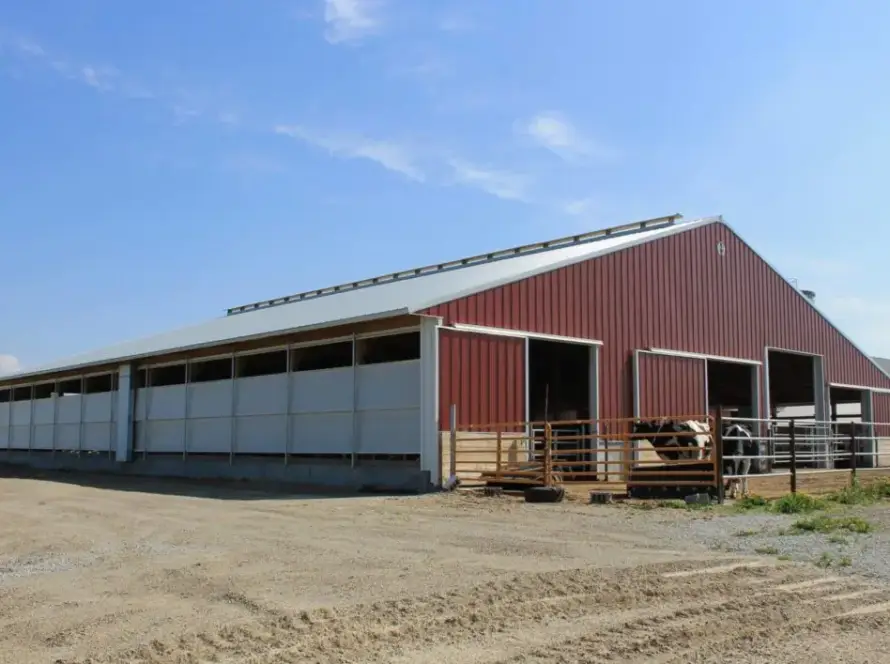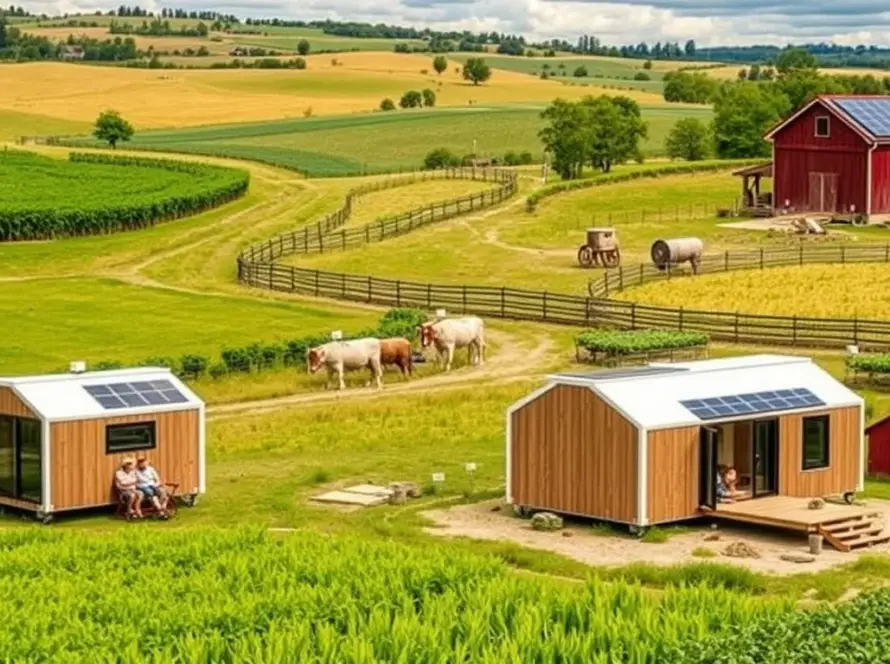Introduction:
When it comes to livestock management, one of the most important decisions you’ll make is choosing the right type of fencing or penning system. Whether you’re working with cattle, horses, or other types of livestock, you need a solution that’s both practical and efficient for your operation.
The two most common types of livestock panels are portable and permanent panels. Each option comes with its own set of advantages, and choosing between them depends on several factors, including the size of your operation, the flexibility you need, and your long-term goals. Both types serve the purpose of containing animals securely, but the methods by which they do so can vary greatly.
In this blog, we’ll break down the pros and cons of portable panels versus permanent panels to help you determine which one best suits your specific needs. Whether you’re looking for a flexible, temporary solution or a more robust, long-term setup, we’ve got you covered.
1. What Are Portable Panels?
Portable panels are lightweight and movable, designed for temporary use. They are typically made of metal or wire, and their modular design allows for easy setup and takedown. Portable panels are ideal for those who need to adjust livestock enclosures regularly or require flexibility for different farm operations.
Pros of Portable Panels:
- Flexibility:Can be moved and reconfigured as needed, making them perfect for temporary enclosures or creating new grazing areas.
- Easy Setup and Breakdown: Ideal for short-term use or when you need to quickly set up and tear down pens.
- Less Labor-Intensive: Since they are lightweight, they’re easier to handle and move than permanent structures.
- Ideal for Temporary Use: Perfect for farms that only need pens or enclosures for short periods, such as for breeding, training, or seasonal use.
Cons of Portable Panels:
- Less Durability: Portable panels may not stand up to harsh weather or high-pressure use over time, especially in areas with strong winds or heavy-duty livestock.
- Lower Security: If not secured properly, they might be easier for animals to push over or escape from, especially large livestock.
- More Frequent Adjustments: The need to move and adjust panels regularly can become time-consuming if you’re constantly changing configurations.
Why it matters:
Portable panels offer great flexibility and are ideal for temporary setups. They work well for livestock owners who need a dynamic and cost-effective solution that can be reconfigured as the farm’s needs change.
2. What Are Permanent Panels?
Permanent panels, on the other hand, are designed for long-term use. They are typically constructed from heavy-duty materials such as welded steel or pipe, making them highly durable and secure. These panels are ideal for creating permanent livestock enclosures, gates, and corrals that need to withstand the rigors of daily use.
Pros of Permanent Panels:
- Durability: Built to last, permanent panels are designed to handle heavy-duty use, adverse weather conditions, and larger livestock.
- High Security: Once installed, permanent panels provide a stronger barrier that animals cannot push through or escape from.
- Minimal Maintenance: These panels require little upkeep once installed, and their long lifespan makes them a wise investment for the long term.
- Stability: Permanent setups ensure that the structure remains stable and won’t shift or collapse over time.
Cons of Permanent Panels:
- Less Flexibility: Once installed, they are difficult to move or reconfigure, which means they’re not ideal for operations that need frequent changes.
- Higher Initial Cost: Permanent panels typically come with a higher upfront cost due to the materials and labor involved in installation.
- Time-Consuming Setup: Installing permanent panels can take longer and requires more planning and effort compared to portable panels.
Why it matters:
Permanent panels provide a secure, durable solution that is ideal for long-term use in stable enclosures. They’re well-suited for larger operations or situations where security and longevity are the highest priorities.
3. Key Differences Between Portable and Permanent Panels
To help you better understand which type of panel fits your needs, here’s a quick comparison of the two:
| Feature | Portable Panels | Permanent Panels |
| Flexibility | Highly flexible; can be moved and rearranged easily | Fixed position; not easy to move or adjust |
| Durability | Less durable; may wear out faster | Extremely durable; built for long-term use |
| Security | Lower security; animals can push them over if not properly secured | High security; animals cannot escape easily |
| Cost | Lower initial cost | Higher upfront cost due to materials and installation |
| Maintenance | More frequent adjustments and setups | Low maintenance once installed |
| Best For | Temporary enclosures, changing layouts | Long-term, permanent enclosures |
Why it matters:
This comparison should help clarify which option works best for your operation based on security, cost, flexibility, and long-term goals.
4. Choosing the Right Panels for Your Needs
The choice between portable and permanent panels ultimately depends on the specific requirements of your farm or ranch operation. Here are some factors to consider when making your decision:
1. Livestock Type:
- Portable Panels work well for smaller animals or less active livestock (such as sheep or poultry). For larger animals, such as cattle, horses, or wildly active livestock, permanent panels offer better security.
2. Purpose of Use:
- If you need flexibility for rotating grazing areas, short-term pens, or temporary enclosures, portable panels are ideal.
- For a permanent corral or breeding facility, permanent panels provide the strength and stability you need.
3. Budget and Long-Term Plans:
- Portable panels are budget-friendly and offer a low-cost solution for temporary needs.
- Permanent panels are a higher investment but are well worth the cost for long-term, high-security applications.
4. Location and Weather Conditions:
- In areas with severe weather or where strong winds are common, permanent panels can withstand these conditions better than portable ones.
- Portable panels are best for milder climates or farms where frequent reconfiguration is necessary.
Why it matters:
Understanding your livestock needs, budget, and goals will help you make the right decision when it comes to selecting panels. Matching the right panel type to your operation ensures maximum efficiency and security.
5. Hybrid Solution: Combining Portable and Permanent Panels
In many cases, a hybrid solution might be the best option for your operation. Combining both portable and permanent panels can offer the best of both worlds.
For example:
- Use permanent panels to create the core of your livestock enclosure (for high security and durability).
- Incorporate portable panels to create temporary pens, grazing areas, or additional enclosures that can be moved as needed.
Why it matters:
A hybrid approach allows you to maximize the strengths of both systems while minimizing their weaknesses. This can be especially useful for farms or ranches that need versatility without sacrificing security.
Conclusion
Choosing between portable and permanent panels ultimately comes down to the specific needs of your farm or ranch. If you require flexibility, portability, and easy setup, portable panels are an excellent choice. On the other hand, if your operation requires long-term durability, high security, and minimal maintenance, permanent panels are the way to go.
In many cases, a combination of both might offer the most effective solution, allowing you to tailor your setup based on the changing needs of your operation. Regardless of the choice you make, ensuring that your livestock is secure and well-contained should always be your top priority.
FAQs
- Can portable panels be used for large livestock like cattle? While portable panels can work for large animals, permanent panels are generally more secure for larger livestock like cattle, as they provide better durability and stronger containment.
- How long do permanent panels last? Permanent panels, particularly those made from steel or galvanized materials, can last decades with minimal maintenance, making them a great investment for long-term use.
- Are portable panels easy to move? Yes, portable panels are designed to be lightweight and easy to handle, making them ideal for creating temporary pens or reconfiguring grazing areas.
- What’s the main benefit of combining both types of panels? A hybrid system allows you to balance flexibility with security, using permanent panels for core structures and portable panels for temporary adjustments as needed.
- Are there any downsides to using portable panels long-term? Portable panels can wear out faster over time and may not offer the same level of security as permanent ones, especially in areas with severe weather or large, powerful livestock.



